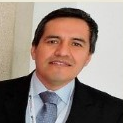Topic Menu
► Topic MenuTopic Editors




Sport and Society
Topic Information
Dear Colleagues,
It is clear that sport plays a fundamental role in today's society, providing multiple physical and psychological benefits. There is no doubt that it exerts an important influence on today's globalised society, promoting economic development in different geographical, cultural and political contexts. Sport is also a powerful tool for strengthening ties and boosting bilateral relations, as sport occupies a key place in many of today's cultures. This Topic aims to disseminate national or international research studies on issues related to sport and society, highlighting the relevance of such studies in addressing various aspects of society and thus contributing to a better understanding of it. We welcome contributions on the above topics in any of the following forms: reliability studies, validity studies, correlational studies, observational studies, study protocols, longitudinal studies, cross-sectional studies, case reports, qualitative studies, studies with discourse analysis, bibliometric reviews, narrative reviews, scoping reviews, systematic reviews and meta-analyses.
Topics of interest include:
- Sport and society;
- Physical activity, exercise or sport and health;
- Gender and sport;
- Political economies of sport;
- History of sport;
- Sociology of Sport;
- Corporal expression;
- Inclusive and adapted sport.
Dr. José Carmelo Adsuar
Dr. Mitchell Alberto Alarcón Diaz
Dr. Jorge Carlos-Vivas
Dr. Roxana Paola Palacios Cartagena
Dr. Carmen Galán Arroyo
Dr. Ana Fondón-Ludeña
Topic Editors
Keywords
- sport
- society
- physical activity
- exercise
- culture
- sports performance
- sports training
- health promotion
- health
- inclusion
- health-related quality of life
- volume
- intensity
- internal and external load quantification
- biomechanics of movement
- body composition and body mass index
Participating Journals
| Journal Name | Impact Factor | CiteScore | Launched Year | First Decision (median) | APC |
|---|---|---|---|---|---|

Societies
|
1.6 | 3.0 | 2011 | 34.4 Days | CHF 1400 |

Sports
|
2.9 | 4.1 | 2013 | 18.7 Days | CHF 1800 |

Healthcare
|
2.7 | 4.7 | 2013 | 21.5 Days | CHF 2700 |

Preprints.org is a multidisciplinary platform offering a preprint service designed to facilitate the early sharing of your research. It supports and empowers your research journey from the very beginning.
MDPI Topics is collaborating with Preprints.org and has established a direct connection between MDPI journals and the platform. Authors are encouraged to take advantage of this opportunity by posting their preprints at Preprints.org prior to publication:
- Share your research immediately: disseminate your ideas prior to publication and establish priority for your work.
- Safeguard your intellectual contribution: Protect your ideas with a time-stamped preprint that serves as proof of your research timeline.
- Boost visibility and impact: Increase the reach and influence of your research by making it accessible to a global audience.
- Gain early feedback: Receive valuable input and insights from peers before submitting to a journal.
- Ensure broad indexing: Web of Science (Preprint Citation Index), Google Scholar, Crossref, SHARE, PrePubMed, Scilit and Europe PMC.



